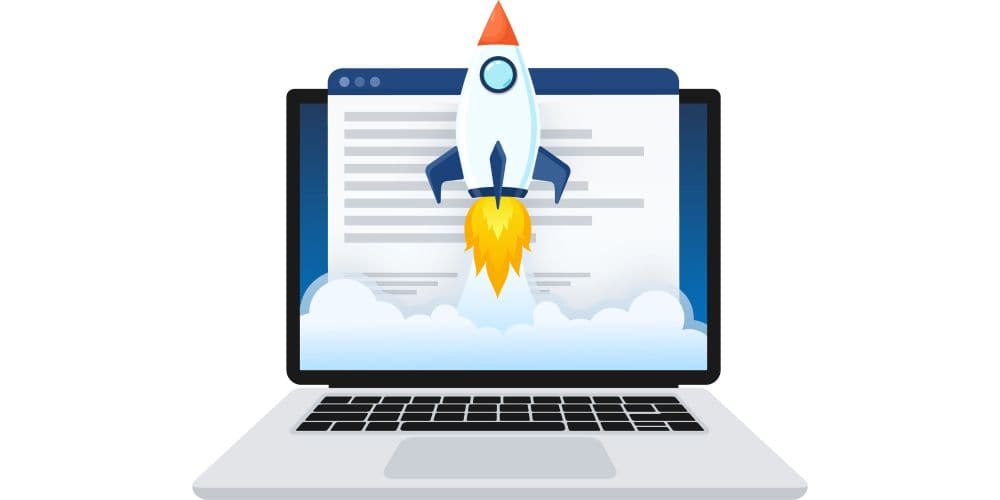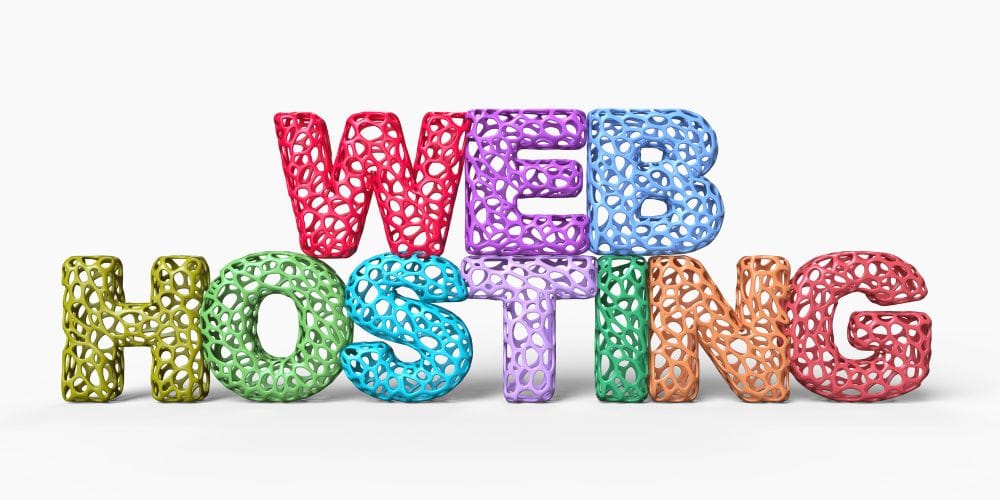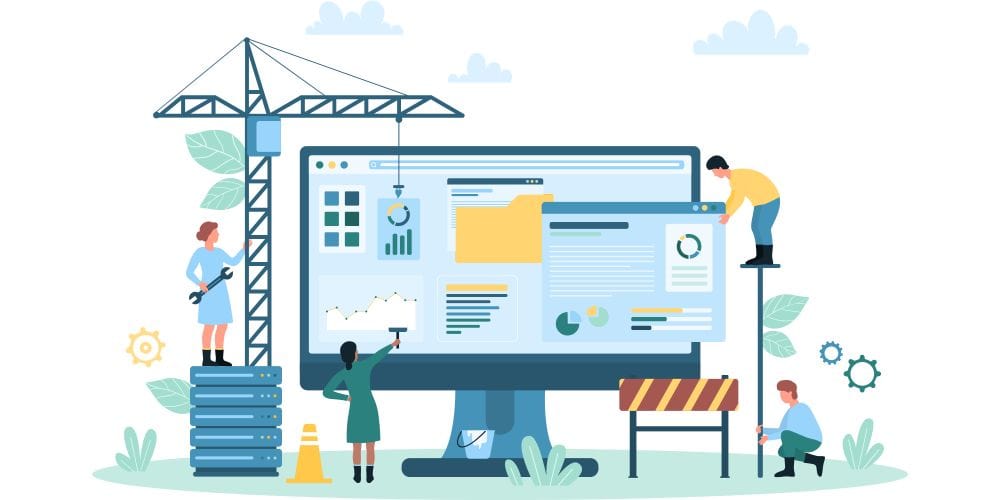In today’s digital age, website speed plays a crucial role in both user experience and search engine optimization (SEO). Slow-loading WordPress websites lead to frustrated visitors who are likely to leave and never return. Additionally, the Google search engine considers website speed as one of Google’s ranking factors, rewarding faster websites with higher visibility in search results.
If you want to enhance WordPress site speed and provide users with an optimal browsing experience, it’s crucial to invest time and effort in optimizing your WordPress website. By following some proven techniques and best practices, you can significantly improve its loading speed and search engine rankings, while increasing website sales! In this article, we will explore some effective strategies to help you speed up your WordPress website and unlock its full potential.

1) Analyzing The Current WordPress Site Speed
Before diving into the optimization process, it’s essential to assess your website’s current speed. The performance of your website can be evaluated using online tools such as Google PageSpeed Insights, Pingdom, and GTmetrix to identify areas for improvement.
When analyzing website speed, it’s crucial to consider key metrics such as page load time, time to first byte (TTFB), and other relevant factors like server response time, render-blocking resources, and overall page size. These metrics give you a comprehensive understanding of your website’s performance and areas for improvement.
Based on the analysis of your website’s speed, you can identify specific areas that need improvement. This could include issues related to hosting, theme and plugin optimization, image optimization, content delivery networks, CSS and JavaScript optimization, browser caching, database optimization, Gzip compression, and overall performance monitoring.
2) Choosing A Fast And Reliable Web Hosting Provider
The choice of web hosting provider has a significant impact to speed up your WordPress website’s speed. Factors like server location, hardware infrastructure, server response time, and scalability options can determine how fast your website loads.
When selecting a hosting provider, consider factors such as server uptime, page load time, customer support, website security measures, caching mechanisms, and scalability options. Look for providers known for their speed and reliability to ensure optimal website performance.
Some popular hosting providers known for their speed and reliability include SiteGround, A2 Hosting, WP Engine, and Kinsta. These providers offer optimized hosting environments specifically tailored for WordPress, ensuring fast and reliable website performance.

3) Optimizing WordPress Themes And Plugins
Choose a lightweight and well-optimized WordPress theme that aligns with your website’s needs. Hire a professional WordPress developer to avoid bloated themes with excessive features and functionalities that can slow down your website.
Make sure you are regularly maintaining your WordPress plugins and disable any unnecessary ones. Each active plugin adds extra code and functionality that can impact your website’s speed. Remove plugins that are no longer needed or find alternative lightweight plugins that offer similar functionality.
Caching plugins like W3 Total Cache, WP Super Cache, and WP Rocket can dramatically improve your website’s performance by generating static HTML files and serving them to visitors, reducing the load on your server. Configure and optimize caching plugins according to your website’s specific requirements for optimal results.
4) Optimizing Website Images
Images often contribute to the majority of a website’s file size. Use image optimization tools or plugins like Smush and ShortPixel to reduce file sizes and improve website speed. Additionally, choosing the right file format for images can affect compression and suitability for specific uses. JPEG is ideal for photographs, PNG is recommended for graphics and drawings, and WebP combines lossy and lossless compression.
Lazy loading is a technique that defers the loading of off-screen images until the user scrolls to them. This reduces the initial page load time and improves perceived website speed.
Responsive images ensure that appropriate image sizes are served based on the user’s device and screen resolution. This prevents unnecessary bandwidth usage and improves website speed. WordPress plugins like Responsive Images by Pixtulate and RICG Responsive Images can automate the process of implementing responsive images.
5) Implementing Content Delivery Networks (CDNs)
Content Delivery Network (CDNs) are geographically distributed networks of servers that store cached versions of your website’s static content. When a user requests your website, the content is served from the nearest CDN server, reducing the distance and improving delivery speed.
Select a reliable CDN provider that offers global coverage and easy integration with WordPress. Popular CDN providers include Cloudflare, StackPath, and Amazon CloudFront. Configure the CDN with your WordPress website to deliver static files, such as images, CSS, and JavaScript, through the CDN network.
Optimize static files, such as CSS and JavaScript, by minifying and combining them to reduce the number of HTTP requests. Leverage caching mechanisms provided by CDNs to cache static content, ensuring faster and more efficient delivery to visitors.
6) Minifying And Combining CSS And JavaScript Files
Minifying CSS and JavaScript files involves removing unnecessary characters, whitespace, and comments, reducing file sizes, and improving load times. This can be done manually or through automated tools and plugins like Autoptimize and WP Rocket.
Automated tools like Minify and UglifyJS can help minify CSS and JavaScript files without requiring manual intervention. These tools optimize code by removing redundant elements and reducing file sizes.
Reduce the number of HTTP requests by combining multiple CSS and JavaScript files into a single file. This technique minimizes the overhead of establishing new connections and reduces latency. WordPress plugins like Autoptimize and Fast Velocity Minify can handle file combination and optimization.

7) Enabling Browser Caching
Enable browser caching by configuring caching headers on your web server. This instructs the user’s browser to store certain resources locally, reducing the need to fetch them on subsequent visits. Modifying the .htaccess file or utilizing caching plugins like W3 Total Cache and WP Rocket can help you configure caching headers effectively.
Caching plugins like W3 Total Cache, WP Super Cache, and WP Rocket simplify the process of enabling browser caching on your WordPress website. These plugins provide intuitive settings to configure caching headers and cache expiration times for different types of resources.
Determine an appropriate caching policy for your static resources, such as images, CSS, and JavaScript files. Set expiration times to ensure that returning visitors receive cached versions of these resources, reducing the number of requests made to the server.
8) Optimizing Database And Website Cleanup
Over time, your WordPress database accumulates unnecessary data, including post revisions, spam comments, and transient options. Regularly clean up and optimize your database using plugins like WP-Optimize and WP-Sweep to remove excess data to improve database performance and load speed.
Optimize your WordPress database by optimizing database tables, repairing corrupted tables, and running database optimization queries. Set up automatic optimization and repair routines to keep your database lean and efficient, enhancing website speed.
9) Implementing Gzip Compression
Gzip compression reduces the size of files sent from your server to the user’s browser, significantly improving website speed. Enable Gzip compression on your web server by modifying server configurations or using plugins like Gzip Ninja Speed Compression and WP Rocket.
Compression plugins like Gzip Ninja Speed Compression and WP Rocket simplify the process of enabling Gzip compression on your WordPress website. These plugins automatically compress files before sending them to the user’s browser, reducing file sizes and improving load times.
After enabling Gzip compression, use online tools like GTmetrix and Pingdom to test the effectiveness of compression on your website speed. Compare the results before and after implementing Gzip compression to assess its impact.
10) Monitoring And Testing Website Performance
Set up monitoring tools like UptimeRobot, Pingdom, or New Relic to track your website’s speed and uptime. These tools send notifications when your website experiences downtime or slowdowns, allowing you to address issues promptly.
Regularly conduct performance tests using tools like GTmetrix, Pingdom, and WebPageTest to identify bottlenecks and areas for improvement. Test various pages and user scenarios to get a holistic view of your website’s performance.
Address any issues identified during performance tests and continually optimize your website’s speed based on the insights gained. Regularly revisit the optimization techniques discussed in this guide to ensure your website is consistently delivering fast and seamless user experiences.
To ensure the best website maintenance, consider hiring a professional WordPress developer.

Conclusion
WordPress website speed is crucial for both user experience and search engine optimization. By taking steps such as reducing file size, optimizing your WordPress media library, and minimizing the number of web pages, you can greatly enhance your website’s loading speed.
Ensure that your visitors have a seamless browsing experience by regularly monitoring your website’s speed and making adjustments as needed.
Ultimately, prioritizing website speed is crucial in today’s digital landscape, where users have increasingly high expectations for fast-loading websites. By following the tips outlined in this post, you’ll be on your way to providing a superior user experience while also improving your website’s visibility and success online.
We hope you’ve been inspired to up your website speed and performance!
Looking for a Whitby Web Designer? Get in touch today!

